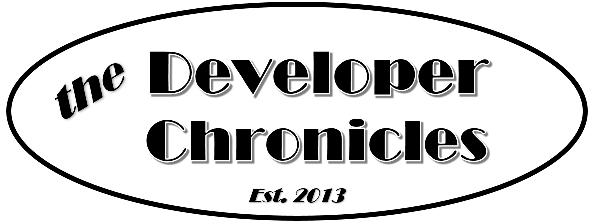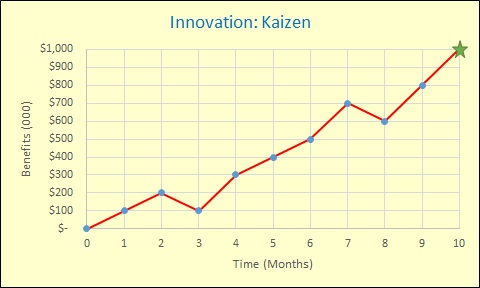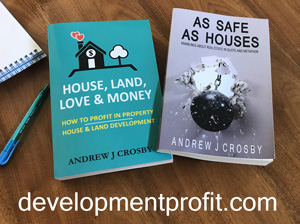During the early days of the New Zealand leaky building crisis I used to spout this throwaway comment: “Man has been building houses for over 2000 years and it’s only now we have learned how to really stuff them up – so much for innovation”
In a persistent 16 year search to innovate in property development, to do things differently, to embrace change, to improve upon the status quo and to think outside the square/box/boundaries/whatever I have reached a cynical crossroads:
I have grown sick of the word ‘innovation’.
Alongside one of the most overused terms in the property industry you can add to my list of disdain these words:
– demonstration
– pilot
– exemplar
– bluesky thinking
– leading edge
– cutting edge
– pioneering
Why, you ask, would I be sick of innovation?
Could this be the result from a lack of success with innovation ? Probably – I haven’t picked up a Forbes magazine lately but I can assure you I’m not on the cover.
Could this be jealousy of those who truly can innovate and profit hansonely from it? More than likely – last time I looked at my share broking account, I didn’t see my name listed as a founding director of Google or Facebook.
Do I have high expectations of what innovation actually is? Maybe. I see true innovation as a bar set very high that will deliver impressive results. That could be my problem. However, my problem is exacerbated by how innovation is touted by many in the wider market.
In my experience, all too often ‘innovation’ is used to describe a situation where from the status quo, one will make a massive leap forward, seemingly overnight. The expectation is that significant problems will have been resolved and massive benefits conferred – just like that.
Many times this expectation arises when those outside of an industry make demands of those within industry without a grip on reality (I mean industry complexities) and their modus operandi is instant gratification (I mean above market and upfront profits).
Whilst solving through innovation is a noble pursuit, there is real risk in thinking of innovation as the goose that will lay the golden egg. There are simple analogies with gambling. Rather than investing in a slow growth investment account from the age of 30, you wait until you are 60 go to Vegas and put your life savings on red. That’s fine if you understand and accept the risk, but if you conveniently ignore the risk aspect you can set yourself up for spectacular failure.
Let me illustrate via some charts.
Assume we have a target to increase benefits by $1,000,000 over 10 months. The green star is the target and the red line our progress in reaching that target. A dashed red line indicates a route anticipated but not taken.
To reach this target we are going to innovate, be innovative and create sublime innovation. I will call soley innovating to meet this target the ‘holy grail expectation’ as represented by Chart One.
With a large focus on simply being innovative to meet such an ambitious target, the risk of achieving the target through using innovation alone can easily result in what is depicted in Chart Two. That is a spectacular failure to come close to the target set. Worse, no improvement may be practically found, the resource wasted and the exercise undertaken rendered completely futile. This is the likely reality of trying to finding the goose that lays a golden egg.
So innovation is risky, but why shouldn’t you try? Why do attempts to be innovative, especially in something as pratical as the construction sector often fail? I argue that if you devote resources to finding a golden egg innovation solution you run a real risk of not only not getting no where near your target but also run the risk of going backwards on your core bread and butter competencies.
I have seen it many times now. Resource is so focused on finding the holy grail of a solution that the potentially much more productive exercise of simply improving the day to day operations takes a back seat.
There is a saying in project management for Privately Financed Infrastructure Initiatives (at least by the World Bank) that “risks should be allocated to those best placed to manage them”.
Beckers, Chiara, Flesch, Maly, Silva and Stegemann, McKinsey Working Papers on Risk, Number 52 A risk-management approach to a successful infrastructure project initiation, financing, and execution, November 2013, explain in terms of risk ownership and strategy:
” a conscious optimization effort to protect and create value by allocating risks to the best risk owners across the life cycle, including an explicit reflection of the respective risk appetite of these risk owners, for example, private financiers”
The attempt to be innovative introduces real risk to property development (as if it wasn’t risky enough). The risks include construction product and installation failure, innovation causing conflicting and unclear objectives, prolonged programmes and project failures especially when promises are broken based on unrealistic risk adjusted expectations.
I would like to rephrase the allocation of risk statements to make it applicable to our intent to be all things innovative:
“the work of innovation should be allocated to those best placed to find it “
For everyone else, concentrate on your your day job!
Chart Three re-frames the all-in innovative holy grail approach to a more gradual but consistent approach to meet our ambitious target. Borrowing from the Japanese principle of Kaizen made famous by The Toyota Way this approach is simple: look for and implement continuous improvement.
Put another way, just find ways to do your day job better!
Improve productivity, gain upfront clarity over client needs, better planning, better design, better project management, more efficient procurement, great communication, strong contractual relationships and getting it right the first time. All those basic things will over time and over all the clients, consultants, contractors and other parties involved in a development project contribute greatly.
For example:
– Whilst many are looking for the most innovative modular technique that will supposedly supplant site built construction why not focus on getting your design and variation management process in check?
– Whilst others look at the plethora of innovation during the risk transfer approach in Private Public Partnerships, why not see how you can get your funding down 50 basis points?
– When subcontractors are running to the next building project for an extra $5 per hour, why not look at a long term reward mechanism to keep them on your projects now and in the future.
– Consider the simple act of communication, as a client are you always clear in what you are asking for? Clarity can control cost.
– Is your organisation focused on the day to day tasks at hand for a project and is there sufficient protection for the project doers from the non-project talkers? Being more focused means more attention to detail, provides for proactive rather than reactive risk control and better deadline performance.
Get the simple things right first. Be innovative on the details, starting in your own back yard. You might reach your target without having to take a spin on the roulette wheel.
Once you have the day job under control with gradual but consistent improvement then, only with dedicated specialist resource, feel free to really take a look at innovative ways to make leaps in advancement. If your innovative goose does manage to lay a golden egg then as shown in Chart Four you will be all the better off.
Whilst still a little nauseous over the misuse of ‘innovation’ just writing about it has spurred me to divert my attention and look at some innovative ideas!
Oh well…old habits die hard and human psychology can take a powerful hold when it is in your bones to find that golden egg laying goose.
Cheers
Andrew Crosby
[Update 2018] Real estate development books now available via Amazon or direct from publisher in New Zealand. Contact publishing@aenspire.com for special rates. Go to www.developmentprofit.com to view publications available.






Once heard a gold medal cyclist (Chris Boardman) talk about how to make things 100% better. Done’t look for the one killer improvement, just try to do 100 things 1% better. I relate to this exactly what you are saying and will continue to apply that principle in my own property development, but it is a principle that surely works in many areas of life. Once you are doing everything well, then look for innovation.